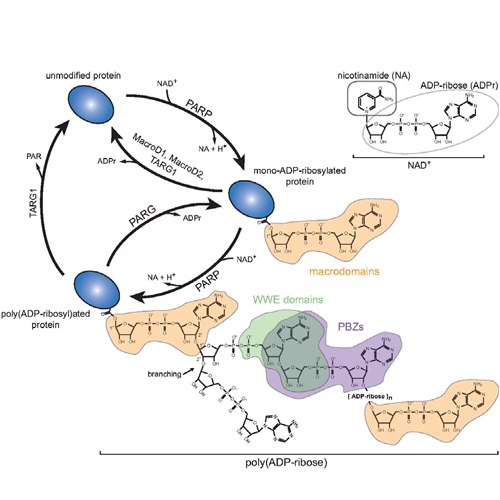The recognition and removal of cellular poly(ADP-ribose) signals.
26-May-2013
The FEBS journal, 2013, doi: 10.1111/febs.12358, published on 26.05.2013
The FEBS journal, online article
The FEBS journal, online article
Poly(ADP-ribosyl)ation is involved in the regulation of a variety of cellular pathways, including, but not limited to, transcription, chromatin, DNA damage and other stress signalling. Similar to other tightly regulated post-translational modifications, poly(ADP-ribosyl)ation employs ‘writers’, ‘readers’ and ‘erasers’ to confer regulatory functions. The generation of poly(ADP-ribose) is catalyzed by poly(ADP-ribose) polymerase enzymes, which use NAD+ as a cofactor to sequentially transfer ADP-ribose units generating long polymers, which, in turn, can affect protein function or serve as a recruitment platform for additional factors. Historically, research has focused on poly(ADP-ribose) generation pathways, with knowledge about PAR recognition and degradation lagging behind. Over recent years, several discoveries have significantly furthered our understanding of poly(ADP-ribose) recognition and, even more so, of poly(ADP-ribose) degradation. In this review, we summarize current knowledge about the protein modules recognizing poly(ADP-ribose) and discuss the newest developments on the complete reversibility of poly(ADP-ribosyl)ation.











